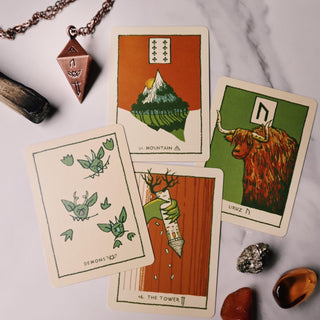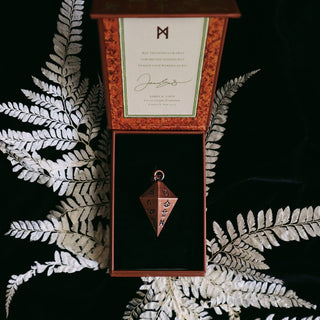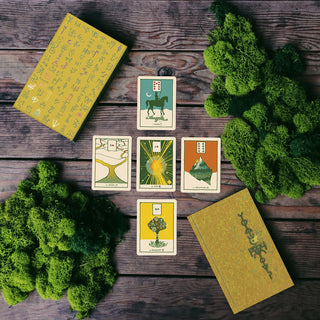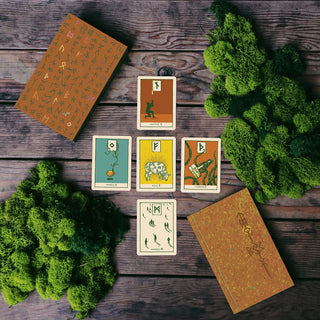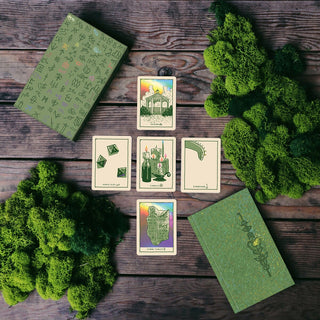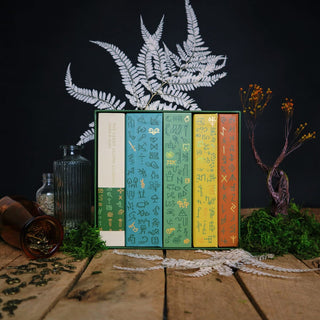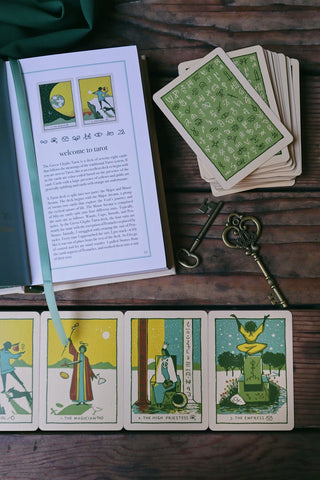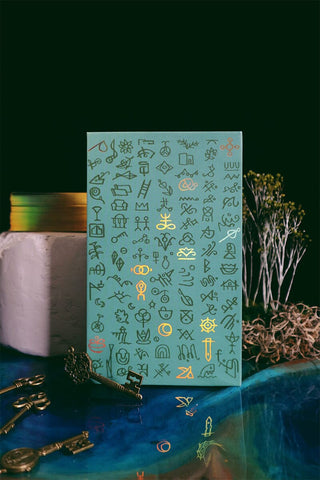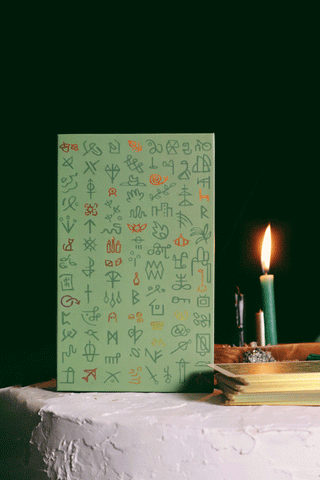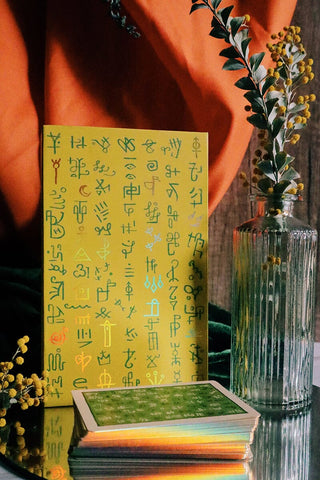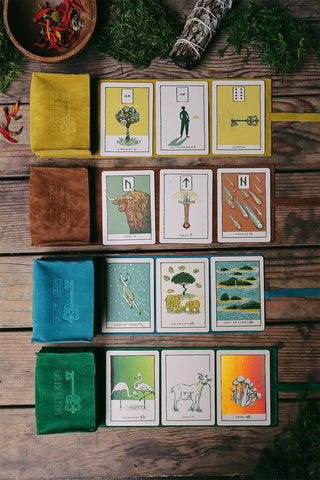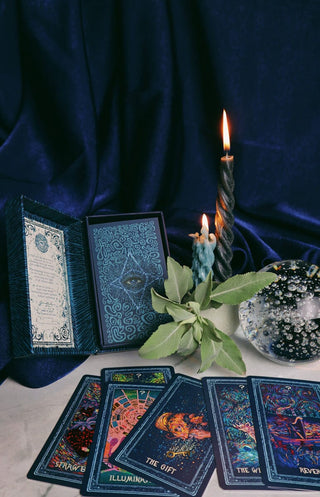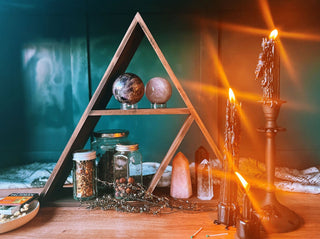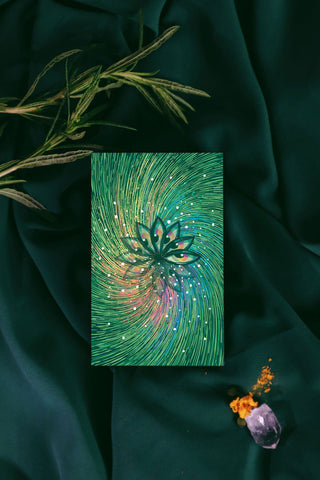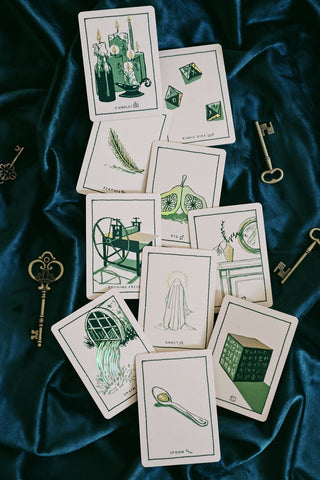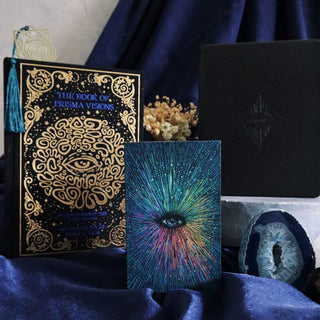
The Green Glyphs Lenormand deck is what started it all.
If you are a backer of the 2019 campaign thank you again for being here. You are probably versed in the art of reading Lenormand by now, but if you want a refresher continue reading below!

Lenormand is, at its heart, an oracle deck. Its origins can be traced back to 1800, but its popularity has only recently peaked. Lenormand is comprised of a set of 36 pictorial symbols that can be used to tell a story and offer insight into the future.
The Grand Tableau, which incorporates all 36 cards in the deck, is where the genius of Lenormand lies.

Reading the Grand Tableau can take several hours as you will have to spend time stringing the symbols together and weaving a story. It can tell you so much from so many different angles that you can easily get lost in the intricacies. It may sound intimidating now, but once you become familiar with the meanings of the symbols, you will find it incredibly intuitive. Lenormand works best when asking about specific events in the future, but can also be used to give you a general overview of what’s to come.
Why are there playing cards inset on the Lenormand cards?
This was the first question I had when I looked at a Lenormand deck. In short, it reveals an underlying system that allows you to read the cards in an even deeper manner. The inset cards also create links between certain cards. You’ll notice that there are no 2s, 3s, 4s, or 5s in the entire deck. The cards begin at 6 and go up to Aces. It’s based on the 16th-century Piquet Playing Card deck (with 6’s added), which is still popular today.

You can also use the inset playing cards to “count the pips” and answer yes or no questions. I go into this more in the guidebook. Reading the inset cards isn’t necessary or required to read Lenormand, but it does offer a little more insight.
Where did Lenormand come from?
Lenormand’s true origin is still not entirely known. It was partially inspired by the Game of Hope, a German card game, but also was found to have links to the symbolism found in coffee ground readings. The name “Lenormand” is actually somewhat of a misnomer. Although the cards were named after Marie Anne Lenormand, a prominent diviner that read for royalty in the late 18th century, she never used this specific set of symbols.

Why are these 36 cards what they are?
These 36 symbols were likely taken from daily life in the 18th century. Their universal nature means that they’ve stayed flexible and even now reliably describe the spectrum of human experience. Compared to most other forms of cartomancy, Lenormand is concise. At first, some cards may seem random and outdated, and they are. You might be like me and feel like these symbols don’t accurately represent your life-- not everyone is heterosexual, gender-conforming, or religious. Social norms have come a long way since 1799. So, if you would like to edit your deck to better fit you or your querent’s life (the one asking the question), you can substitute the following cards for their like-numbered cards. Just make sure you have a total of 36 cards when you are doing a reading. Keep the cards you are not using in the box--you’ll want to switch them depending on the reading:

Why do the cards have numbers?
The numbers on the cards correspond to the order of the Houses of Lenormand. Rider is the first card in the deck and Cross is the final card. This is always the same. The 1st house is the house of the Rider. The houses come into play when doing a Grand Tableau reading, which is explained more in the guidebook!
In short, Lenormand is a very intuitive system of divination. It's fun to read and offers a breath of fresh air from the Tarot system.
I hope this was a helpful introduction to Lenormand and that you continue to immerse yourself in this unique and intuitive practice.
- James






